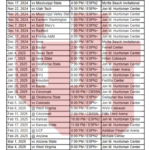Physical activity is one of the most important factors when it comes to losing weight and maintaining a healthy lifestyle. While diet plays a crucial role in managing your weight, physical activity helps you burn calories, build muscle, and improve your overall well-being. In this guide, we’ll explore the connection between physical activity and weight loss, different types of exercises you can incorporate into your routine, and tips for staying consistent.
1. How Physical Activity Helps with Weight Loss
Physical activity aids weight loss by increasing the number of calories your body burns. The more calories you burn, the easier it becomes to create a calorie deficit (burning more calories than you consume), which leads to weight loss. Here’s how physical activity contributes to your weight loss goals:
- Burns Calories: Physical activity increases your total daily energy expenditure (TDEE), which helps you burn more calories throughout the day.
- Boosts Metabolism: Regular exercise can increase your resting metabolic rate, meaning you’ll burn more calories even when you’re not exercising.
- Builds Muscle: Strength training builds lean muscle mass, which burns more calories at rest than fat tissue. This means the more muscle you have, the higher your metabolism.
- Reduces Fat: Consistent exercise helps reduce body fat, especially around the belly, while preserving muscle mass.
- Improves Mood and Energy Levels: Physical activity releases endorphins (feel-good hormones), which can reduce stress, anxiety, and depression. It also increases energy levels, making it easier to stick to your fitness and diet plans.
2. Types of Physical Activities for Weight Loss
There are different types of exercises you can include in your workout routine. Each type of physical activity targets different aspects of your body and fitness, providing unique benefits to your weight loss journey.
Cardiovascular (Cardio) Exercises
Cardio exercises are excellent for burning calories and improving heart health. These exercises increase your heart rate and are effective for fat burning. Some common cardio exercises include:
- Running: One of the best ways to burn calories. Running at a moderate pace can burn approximately 300-400 calories in 30 minutes.
- Cycling: Whether stationary or outdoor, cycling is a low-impact way to torch calories and improve cardiovascular endurance.
- Swimming: Swimming engages your whole body and is great for burning calories without putting stress on your joints.
- Jump Rope: Skipping rope is a fun and effective way to burn calories quickly and improve coordination.
- Walking: Simple but effective, walking is ideal for beginners or those looking for a low-impact way to stay active.
Strength Training (Resistance Training)
Strength training helps you build lean muscle, which improves your metabolism and allows you to burn more calories at rest. It also tones your body, giving you a leaner appearance. Examples of strength training exercises include:
- Weightlifting: Using dumbbells, barbells, or resistance bands to target specific muscle groups.
- Bodyweight Exercises: Push-ups, squats, lunges, and planks use your own body weight to build strength.
- Kettlebell Workouts: These incorporate both cardio and strength training for a full-body workout.
- Resistance Bands: These flexible bands offer resistance, making your muscles work harder and promoting muscle growth.
High-Intensity Interval Training (HIIT)
HIIT is an exercise method where you alternate between intense bursts of activity and short periods of rest. HIIT workouts are time-efficient and can burn a significant amount of calories in a short period. Here’s why HIIT is effective:
- Burns More Calories in Less Time: A 20-30 minute HIIT session can burn as many calories as an hour of steady-state cardio.
- Increases Fat Burning Post-Workout: HIIT boosts your metabolism, and you continue to burn calories long after the workout (known as the afterburn effect).
- Variety of Exercises: HIIT can include jumping jacks, burpees, sprints, or cycling—keeping your workouts fun and engaging.
Flexibility and Mobility Exercises
While flexibility and mobility exercises don’t burn as many calories as cardio or strength training, they are still essential for overall health and weight loss. These exercises improve your range of motion, reduce the risk of injury, and aid recovery:
- Yoga: A gentle way to improve flexibility, reduce stress, and promote mindfulness.
- Pilates: Focuses on strengthening the core and improving posture, balance, and flexibility.
- Stretching: Regular stretching helps maintain muscle health and can enhance your performance in other workouts.
3. Creating a Balanced Workout Routine
To maximize weight loss, you need a well-rounded workout routine that incorporates various types of physical activity. Here’s how you can create a balanced exercise plan:
- Cardio: Aim for at least 150 minutes of moderate-intensity cardio or 75 minutes of high-intensity cardio each week. You can break this up into shorter sessions, like 30 minutes five times a week.
- Strength Training: Include strength training exercises at least 2-3 times per week to build muscle mass and boost metabolism.
- Flexibility: Add flexibility exercises like yoga or stretching to your routine 2-3 times a week to improve mobility and prevent injuries.
- HIIT: If you’re short on time, include 1-2 HIIT sessions per week to burn calories quickly.
4. Staying Consistent and Overcoming Challenges
Consistency is key to achieving and maintaining weight loss. Here are some tips to help you stay motivated and on track with your fitness goals:
- Set Realistic Goals: Start with small, achievable goals and gradually increase the intensity and duration of your workouts.
- Create a Routine: Set a specific time each day for your workout and make it a non-negotiable part of your routine.
- Track Your Progress: Keep a workout journal or use fitness apps to track your progress. Seeing improvements will motivate you to keep going.
- Find a Workout You Enjoy: You’re more likely to stick with exercise if you enjoy it. Experiment with different activities until you find something you love.
- Incorporate Variety: Prevent boredom by mixing up your workouts. Try new exercises, change the intensity, or work out in different environments.
- Listen to Your Body: Rest is just as important as exercise. Make sure you allow time for recovery to prevent injuries and burnout.
- Work Out with a Friend: Exercising with a buddy can keep you accountable and make your workouts more fun.
5. Physical Activity Outside the Gym
You don’t need to rely solely on gym workouts to stay active. Incorporating more movement into your daily routine can help you burn additional calories:
- Take the Stairs: Instead of the elevator, opt for the stairs to burn extra calories.
- Walk More: Park farther away from your destination, walk to nearby places, or take short walks during work breaks.
- Housework and Yardwork: Cleaning, gardening, or doing household chores can also count as physical activity.
- Play a Sport: Engaging in recreational sports like tennis, basketball, or swimming with friends or family can make exercise fun.
6. The Role of Rest and Recovery
Rest and recovery are just as important as exercise when it comes to weight loss and fitness. Your body needs time to repair and strengthen muscles after workouts. Here’s why rest is crucial:
- Prevents Overtraining: Over-exercising can lead to burnout and injuries, hindering your progress. Rest days allow your muscles to recover.
- Improves Performance: Giving your body time to rest ensures you perform better during your next workout.
- Boosts Mental Health: Taking a break helps reduce stress and allows you to enjoy your fitness journey without feeling overwhelmed.
7. Combining Physical Activity with Healthy Eating
While physical activity is essential for weight loss, it should be combined with a balanced, healthy diet for the best results. Here are some dietary tips to support your physical activity and weight loss goals:
- Eat Enough Protein: Protein helps repair muscles after workouts and keeps you full longer, reducing the temptation to overeat.
- Stay Hydrated: Drink plenty of water before, during, and after exercise to stay hydrated and improve performance.
- Fuel Before Workouts: Have a small snack or meal that includes carbs and protein before exercising to give you energy and maximize performance.
- Refuel After Workouts: Eat a post-workout meal or snack that contains both protein and carbs to promote muscle recovery.
Conclusion
Physical activity is a powerful tool for weight loss and overall health. By combining different types of exercises—cardio, strength training, HIIT, and flexibility exercises—you can burn more calories, build muscle, and boost your metabolism. The key to success is consistency, so find activities you enjoy, set realistic goals, and stay committed. Remember, physical activity paired with healthy eating will lead to sustainable weight loss and long-term wellness.






